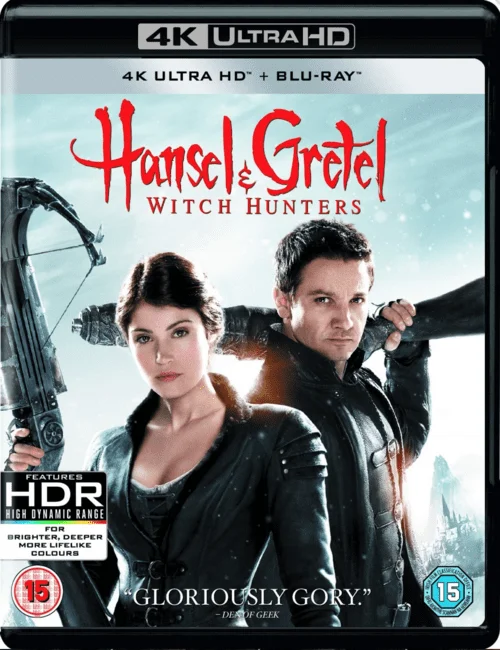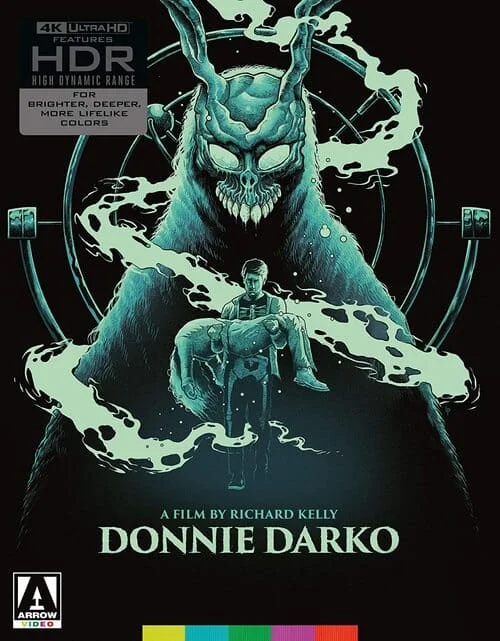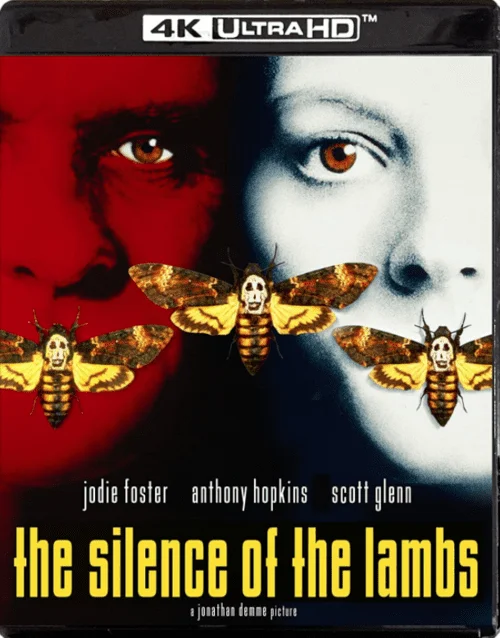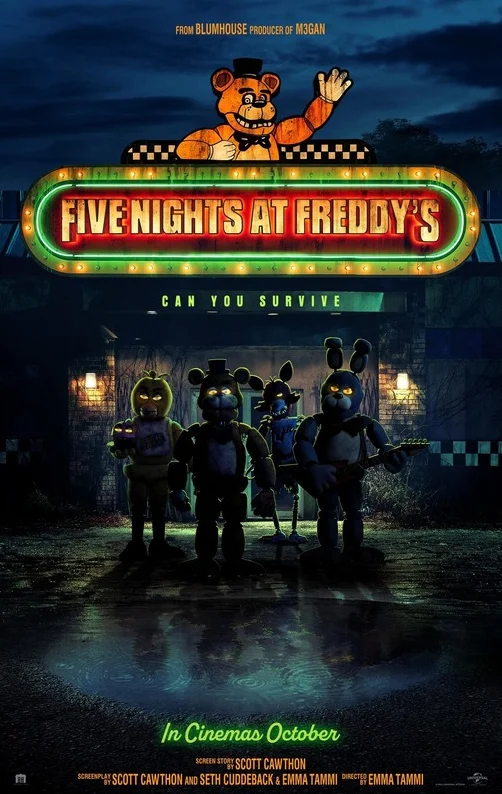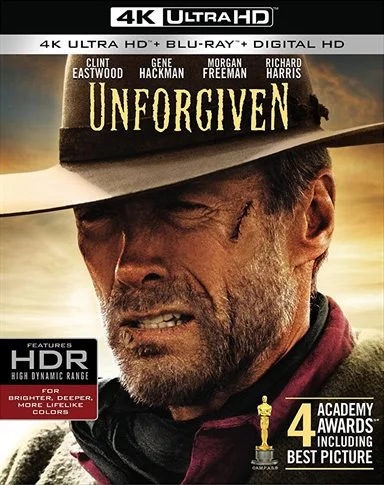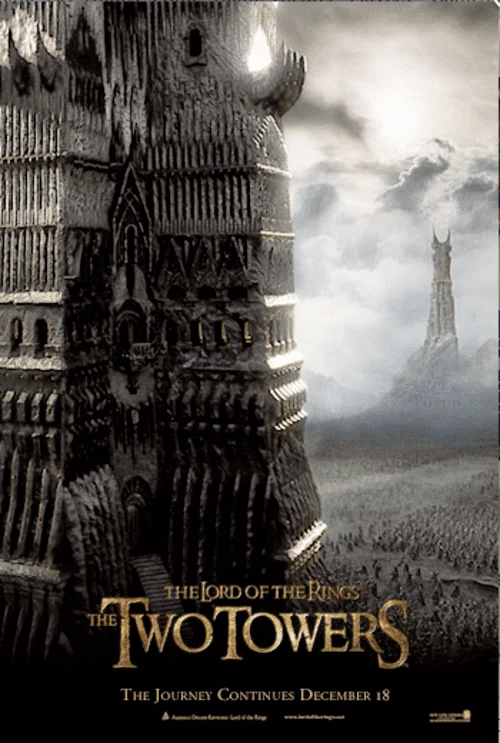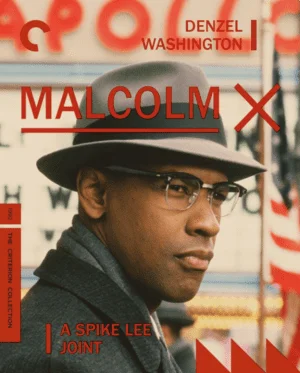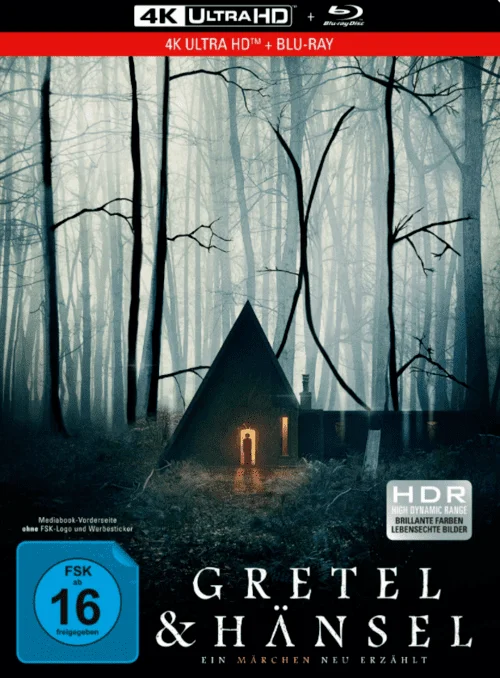
Gretel and Hansel 4K 2020 Ultra HD 2160p
Cast: Sophia Lillis, Samuel Leakey, Alice Krige, Jessica De Gouw, Fiona O'Shaughnessy, Donncha Crowley, Jonathan Gunning, Charles Babalola, Giulia Doherty, Jonathan Delaney Tynan, Darlene Garr, Melody Carrillo, Nessa Last, Harry O'Cualacháin.

The main character Gretel sets out with her younger brother on a dangerous journey through a dark forest in search of food. The walk turns into a real nightmare, as they will have to enter into an unequal battle with terrifying evil.
Gretel and Hansel 4K Review
Oz (or Osgood) Perkins is the son of the famous actor Anthony Perkins, who played Norman Bates in the cult "Psycho" by Hitchcock and worked with Orson Welles, Mike Nichols and Sidney Lumet; in other words, one of the most remarkable figures in the cinema of the 60s and 70s. His mother Berry Berenson is not so popular, but she is also diverse and interesting: model, actress and photographer of Glamor and Vogue. Despite such a pedigree, the fate of Oz developed, perhaps, in the most monstrous way: in 1992, his father dies of pneumonia, which developed against the background of AIDS, and in 2001, his widow ends up in the ill-fated Boeing 767-223ER plane that crashed into the twin towers.
These events greatly affected the young Perkins. Without becoming a great actor (he performed his most notable roles in "The Secretary" and "Legally Blonde", although those were secondary, insignificant images), in 2015 Oz followed the principle of "all or nothing" and, having almost no experience in directing, he presumptuously directed the indie horror film "February". The risk was justified: after this work, they began to talk about Perkins as a promising author, capable of accommodating deep reflection on painful personal problems in a conventional genre shell.
This debut is at first glance a pretty standard movie about soul abduction and exorcism. However, an important change of accents for the genre took place in it: the main character - a girl Kate from a Catholic boarding school - learns about the death of her parents and, not finding support in the nuns and Rose's neighbor, gives her soul to the only being who is ready to share her pain - the devil. At the end of the story, despite all the atrocities she had committed, a feeling of genuine compassion and understanding of a confused, useless person remained. A less successful, but no less curious second work - "I am a charm living in a house" - Perkins also filled with a feeling of total loneliness of the protagonist (interestingly, in all three films the central characters are female), but there the director interpreted his relationship to a greater extent with the deceased father.
His "Gretel and Hansel", although it is associated with the folklore heritage and echoes the classic fairy tale plot, fits well into the director's system of values and views. In the center of the story are the same canonical brother and sister, whom the parents (in the case of a fresh adaptation - a crazy single mother) drive out into the street to their own devices. But before getting to the famous house of the evil witch (though this time not so gingerbread), the heroes encounter the evil inhabitants of the forests, meet a hunter who tells them how to make a living, and eat hallucinogenic mushrooms.
However, Perkins' audacity and fresh look does not lie in such cosmetic plot transformations. The unusual order of characters in the title of the film (instead of "Hansel and Gretel" - "Gretel and Hansel") is not some timid step to please the ubiquitous feminism, as many Russian-speaking commentators have already begun to laugh it off, but quite a favorite trick of the director. To change the emphasis, to fill the classic story (be it horror stories about exorcism and a house with ghosts or a fairy tale by the Brothers Grimm) with completely different meanings - that's what really attracts him.
His Gretel is another eternally reflective, lonely heroine who feels like a stranger in this world. Her mother and even her brother reproach her for not going to work as a servant to the swaggering ugly milord (in fact, the keeper of a brothel), and already in the witch's house, the only one who can show sympathy is a suspicious vile old woman with a broom. how every morning the table is filled with a variety of dishes. She, and not the younger stupid brother, is the central character of this story.
All the propp's functions of a fairy tale are in place: leaving home, and the catch, and the opposition of the antagonist to the hero. Perkins does not get rid of the fairy-tale elements at all, but more often pushes them into the background, draws attention to the personal tragedy of Gretel, who is experiencing growing up and moving away from her brother. The first menstruation, awareness of their own sexuality and, finally, the desire for independence by breaking all ties with the past. For Perkins, these problems are obviously important (especially considering that he also has a younger brother - folk rocker Elvis Perkins, with whom he collaborated for the first and last time on the debut), and therefore the most poignant moments of Gretel and Hansel - those where the topic of painful parting and the need for a divergence of paths with a loved one is most acute.
He again recommends himself as a notorious formalist. From a content point of view, his movie is full of understatement, teeming with hints and ambiguous details. But whole complexes of problems are best revealed due to the phantasmagoric, fairy-tale form. Perkins has always been the author of hyper-expressive films in which the colors and camera movements spoke and contained more than the rare monotonous dialogue of the characters. In Gretel and Hansel, this trait sometimes reaches the point of absurdity: the yellow shades that fill the rooms of the witch's house are replaced by cold blues, and in the center of the forest edge, just like in Mandy by Cosmatos, an unnatural theatrical red can appear.
Visually, the entire film resembles an unhealthy dream, where space can expand and contract, and visions of witches and dead children can replace reality. This, in general, is not quite a horror in the usual viewer sense: there is quite a bit of exciting, frightening or tense here. Perkins repeats the trick, which has already been successful twice: with a slow, almost unbearable storytelling, he drives the viewer into a series of surrealistic inventive nightmares, psychological complexes of the protagonist, from which he can hardly get rid of. If "February" and "I am a darling living in a house" recommended Oz as a talented director, then "Gretel and Hansel" takes him to a new level - the level of a director of the level of Ari Astaire and Robert Eggers; an author who abruptly changes the rules of the game and speaks with genuine sincerity about human passions and fears in the public language of cinema. Obviously, this is not yet his most breakthrough film - but here one can already feel the special, unique look of a real artist.
Info Blu-ray
Video
Codec: HEVC / H.265
Resolution: 4K (2160p)
HDR: HDR10+
Aspect ratio: 1.56:1
Original aspect ratio: 1.55:1
Audio
English: DTS-HD Master Audio 5.1 (48kHz, 24-bit)
Subtitles
German
File size: 17.0 GB
Trailer Gretel and Hansel 4K 2020 Ultra HD 2160p
Latest added movies
Comments on the movie
Add a comment
 like
like do not like
do not like